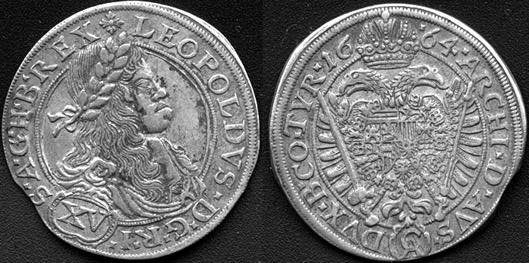A Brief History of the “Habsburg Chin”
This information comes from material submitted by member John Siple

This information comes from material submitted by member John Siple

There is no dispute that the genetic flaw entered the Habsurg family with Cymburga of Masowia early in the fifteenth century when she married Duke Ernst of Inner Austria. The European nobility had, by this time, already thoroughly intermarried and so the true sources of such genetic aberations is too often shrouded in mystery and complex ancestry. Cymburga carried genes from Portugese, Spanish, Austrian and Burgundian ancestors. Who, or what pairing, or which ancestors brought the deformity is beyond telling. Her eldest son, Friedrich III, the German Emperor, shows a strong but not mishapen chin. However, his son Maximillian had a serious jaw deformation that was made more prominant by his chunky visage. From him the jaw descended into both the Spanish and Austrian/German Royal lines for at least two centuries before being seemingly disappearing. We have no idea if it is gone forever or may reappear again with a new marriage that revivies the gene.
 Certainly
the very high degree of intermarriage between the various branches of the Habsburgs
greatly contributed to the prevalence of the problem (The Spanish king Carlos
II is pictured at the left). There were multiple marriages of uncles and
nieces, first cousins (not to mention second, third or more distant), nephews
and aunts and in the case of Philip II all three. That one crucial marriage
was with Juana "The Mad", who truly was unstable, only made the intermarriages
more unfortunate for their offspring. Other known familial problems included
stomach problems, asthma, gout, a tendency to dropsy (COPE), epilepsy, depression
and a seeming weak resistence to syphilis (which might also have been spead
through prenatal transmission).
Certainly
the very high degree of intermarriage between the various branches of the Habsburgs
greatly contributed to the prevalence of the problem (The Spanish king Carlos
II is pictured at the left). There were multiple marriages of uncles and
nieces, first cousins (not to mention second, third or more distant), nephews
and aunts and in the case of Philip II all three. That one crucial marriage
was with Juana "The Mad", who truly was unstable, only made the intermarriages
more unfortunate for their offspring. Other known familial problems included
stomach problems, asthma, gout, a tendency to dropsy (COPE), epilepsy, depression
and a seeming weak resistence to syphilis (which might also have been spead
through prenatal transmission).
There are few studies on prognathism and its hereditary transmission, but one by Schulze and Weise led them to believe the deformity was an irregualrly dominant gene but with variable penetrance. They could not determine if it was actually the result of multiple gene aberations or of one alone. The likely conclusion for the Habsburgs is that the gene is still present but weak and recessive. We do know that exhibiting the genetic malformation was not sexually linked as we have portraits of female Habsburgs with the deformed jaw, although transmission was sexually linked and afflicted some 50% of the dHabsburgs. Otherwise it remains a mystery of past history that troubles the Habsburgs no more.
It is still of interest to the medical profession today as the following medical article summary shows:
J Med Genet. 1988 Dec; 25(12): 838-42.
“ Another family with the 'Habsburg jaw'.”
Thompson EM, Winter RM.
Department of Paediatric Genetics, Institute of Child Health, London.
We report a three generation family with similar facial characteristics to those of the Royal Habsburgs, including mandibular prognathism, thickened lower lip, prominent, often misshapen nose, flat malar areas, and mildly everted lower eyelids. One child had craniosynostosis which may be part of the syndrome.
Personal Name as Subject:
Philip IV
Carlos II
Charles V
PMID: 3070045
Hart, Gerald D., "The Habsburg Jaw", C.M.A. Journal, Ottawa, April 3, 1971, pp. 601-3.
Schulze, C. and W. Weise, "The Heredity of Prognathism", Fortschr. Kieferorthop., 26: 213, 1965.